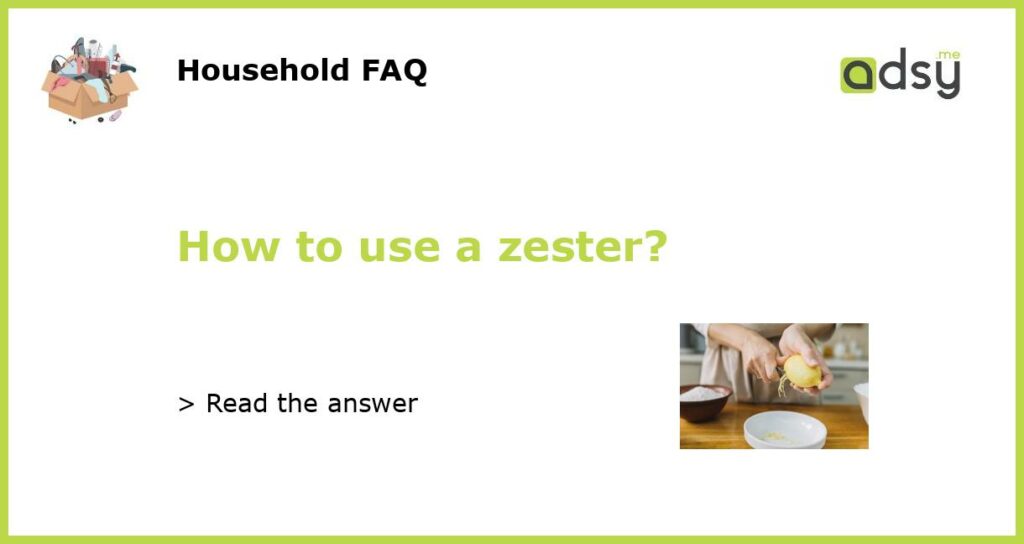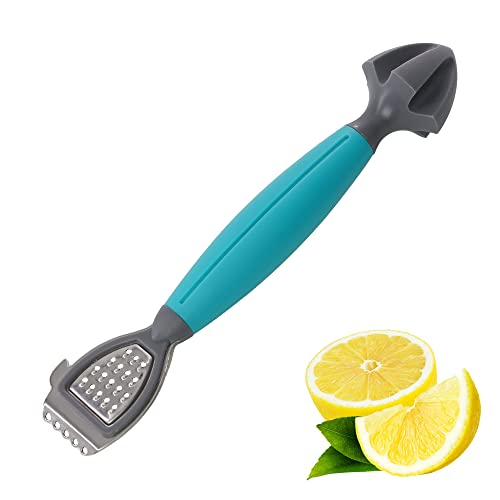What is a zester?
A zester is a kitchen tool used to remove the colored outer layer of citrus fruits, such as lemons, limes, and oranges. It is designed to extract the flavorful oils and zest from the fruit without getting any of the bitter white pith. Zesters typically have a long, narrow handle and a row of small, sharp holes in a concave surface. This allows you to easily scrape the zest from the fruit.
Step-by-step guide on using a zester
Using a zester is a simple and efficient way to add a burst of citrus flavor to your dishes. Here is a step-by-step guide on how to use a zester:
Step 1: Choose a firm, ripe citrus fruit. Wash and dry it thoroughly to remove any dirt or wax from the outer skin.
Step 2: Hold the zester firmly by the handle and position it at a slight angle against the fruit.
Step 3: Apply light pressure and gently drag the zester across the surface of the fruit. Move the zester back and forth to collect the zest in the small holes.
Step 4: Be careful not to press too hard or scrape too deeply, as this can result in the bitter white pith being mixed with the zest. Aim to collect only the colored outer layer of the fruit.
Step 5: Continue zesting until you have collected the desired amount of zest. The amount will depend on your recipe and personal preference.
Step 6: Once you have finished zesting, gently tap the zester against the edge of a bowl or container to release the collected zest.
Tips and tricks for using a zester
While using a zester is fairly straightforward, here are some tips and tricks to help you get the most out of your zesting experience:
Tip 1: Use a gentle back-and-forth motion when zesting to avoid pressing too hard and scraping the bitter pith.
Tip 2: Rotate the fruit as you zest to ensure you are evenly collecting zest from all sides.
Tip 3: If you don’t have a zester, you can use a fine grater or microplane as an alternative. These tools work in a similar way and can also produce fine zest.
Tip 4: Only zest the amount you need for your recipe. Excess zest can be stored in an airtight container in the refrigerator for a few days.
Tip 5: Experiment with different citrus fruits to discover new flavors and combinations. Each fruit has a unique zest profile that can enhance the taste of your dishes.
Creative uses for citrus zest
The zest obtained from using a zester can be used in a variety of ways to add a burst of citrus flavor to your cooking. Here are some creative uses for citrus zest:
Use 1: Add citrus zest to marinades and dressings for a tangy twist.
Use 2: Sprinkle citrus zest over salads or roasted vegetables to brighten the flavors.
Use 3: Mix citrus zest with butter or olive oil and spread it on bread or toast for a refreshing snack.
Use 4: Incorporate citrus zest into baked goods such as cakes, cookies, and muffins to add a subtle citrus flavor.
Use 5: Infuse citrus zest into cocktails, mocktails, or hot beverages like tea for a citrusy aroma and taste.
Cleaning and maintenance tips for your zester
Proper cleaning and maintenance of your zester will ensure its longevity and continued effectiveness. Here are some tips:
Cleaning tip 1: Rinse your zester with warm, soapy water immediately after use to remove any leftover zest and oils. Use a brush or sponge to gently scrub the holes and surface of the zester.
Cleaning tip 2: If any stubborn zest remains stuck in the holes, use a toothpick or small brush to dislodge it.
Cleaning tip 3: Dry the zester thoroughly before storing to prevent rusting or mold growth. You can use a clean cloth or air dry it on a drying rack.
Maintenance tip 4: Avoid using abrasive cleaners or harsh chemicals on your zester, as these can damage the surface and affect its performance.
Maintenance tip 5: Store your zester in a dry place, away from moisture and humidity, to prevent any potential damage or corrosion.






